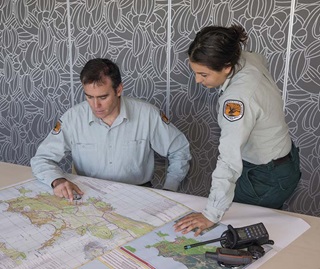 Fire events in national parks include planned burns and bushfires. Planning and preparation for these events is essential for effective fire management for each landscape and community in NSW.
Fire events in national parks include planned burns and bushfires. Planning and preparation for these events is essential for effective fire management for each landscape and community in NSW.
Policies and procedures
The policies and procedures for fire management in NSW national parks are stated in our Fire Management Manual. We work closely with other fire management agencies to develop these guidelines including:
- NSW Bush Fire Coordinating Committee - we help develop and review their policies and procedures
- local Bush Fire Management Committees - we help develop Bushfire Risk Management Plans.
Strategy
Our overall strategy for fire management in NSW national parks is explained in Living with Fire in NSW National Parks – A strategy for managing bushfires in national parks and reserves 2012-2021.
This strategy provides a clear framework for the NSW National Parks and Wildlife Service to manage bushfire in national parks and outlines our priorities for future fire management and research.
As well as our state-wide strategy, individual parks, or groups of parks, have specific fire management strategies and plans.
Reserve fire management strategies
Reserve fire management strategies (RFMS) are developed for each park, or group of parks, in conjunction with park neighbours and contain risk mitigation and fire suppression information. They are used as the basis for planning hazard reduction or prescribed burns.
Hazard reduction burns are used to reduce the amount of flammable material, or fuel, in a park before the bushfire season.
Fire management strategies use a system of zones to categorise sections of reserves with different management objectives. These zones concern:


